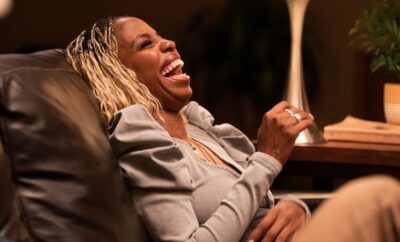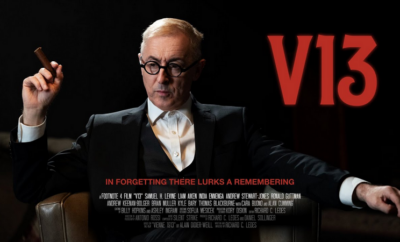
Movie Reviews
Brats
By: Kelly Kearney
The song “Don’t You Forget About Me” symbolizes an era when youth reigned supreme and society submitted to the Kings and Queens of teen dramas. Never before had young people exerted such influence over pop culture, even forty years later, “The Brat Pack” continues to serve as a benchmark for the challenges of youth. These films also represented a cultural zeitgeist that catapulted teens into the driver’s seat of what excited moviegoers. The Brat Pack was everywhere and throngs of fans often defined themselves by which member of the clique they most identified with. It was all harmless fun, but the moniker also grabbed the actors’ careers in a chokehold and it was all thanks to one critical journalist who disparaged movies like Pretty in Pink, The Breakfast Club and St. Elmo’s Fire (to name a few) as trivial, mass-produced entertainment lacking in artistic merit. What’s one man’s cheese is an entire generation’s cultural awakening–something Brats’ director Andrew McCarthy needed distance from before he could view his past in a whole new and inspiring light.
Losing the Narrative
It all began on June 10th, 1985, when journalist David Blum interviewed Emilio Estevez for New York Magazine. Estevez, a young and enthusiastic nepo baby (son of the renowned actor Martin Sheen) entered the interview feeling comfortable discussing his collaborations with a group of actors made famous by director John Hughes’ exploration of teen-life. The similarly ambitious and green Blum sought to make his mark by affixing a label to this privileged pack, which he dubbed “brats,” portraying them as symbols of youthful excess in the late-night streets of Hollywood—that image couldn’t be further from the truth.
Now, forty years after Blum pigeonholed this group Andrew McCarthy, one of the original Brat Packers, dissects his feelings about the nickname as he comes face-to-face with that constant shadow he always saw in the rearview mirror threatening to derail every project he pursued. The stigma of the Brat Pack was a perception of McCarthy’s that most of the world didn’t share. Although we see that in interviews with Estevez, who tenses at the term and the memory of that interview, that at least one of his fellow Brats gets it. The name makes him cringe more than once in the documentary, as at the start of the film he was still fostering a deep resentment towards Blum over losing control of the direction of his career. Those feelings are what inspired McCarthy to stop running from the past and call up his old friends to help him confront what it means to embrace The Brat Pack.
Reckoning With the Past
The 80’s era of Hollywood birthed a generational transition that saw established film actors like Al Pacino (who ironically saw The Godfather as an inescapable persona he had to make peace with) yield the spotlight to emerging figures like Judd Nelson’s character John Bender from The Breakfast Club. The Brat Pack sold-out theaters across the country and teen angst was all the rage. Andrew McCarthy does a superb job of piecing together a tapestry of clips and flashbacks from that time as he touches on the enduring influence he and his friends had on the film business. Without them, would the CW’s line-up even exist today? It’s a question Andrew ponders with Rob Lowe, who seems the least affected by the title of brat. The characters that they portrayed resonated deeply with young people, leaving an indelible mark that continues to reverberate today whenever you ask someone, “Who was your favorite Brat Packer?” or the more important question that Andrew brings to Jon Cryer’s interview, “Who was a member of the Brat Pack?” The answer is always a hot debate and if you ask any Gen-Xer, the response is never the same. Before the internet connected the world, kids struggled to find themselves on screen, but all that changed when Duckie slid his two-toned Creepers across the record shop floor lip-syncing his way into every nerd’s heart. Finally, the outcasts had their man, but Cryer wasn’t a member of the Brat Pack and he is grateful for it. He shares Andrew’s disdain for the nickname and has always been happy not to be a part of that publicity circus.
In interviews featuring Emilio Estevez, Demi Moore, Rob Lowe and “brat pack adjacent” Jon Cryer, director McCarthy delves into how his fellow actors navigated the aftermath of being branded as “brats.” One of the most captivating aspects of the documentary is observing McCarthy contemplating his youth with the wisdom of a 60-year-old. “I lost control of the narrative of my career,” McCarthy acknowledges, reflecting on the post-Blum era. Of course, Blum had his reasons and, while he feels bad about how hard the group took it, he never apologizes for the years of anger that led McCarthy to his doorstep. The final face-to-face confrontation is full of tension as McCarthy waits for an apology, but Blum never offers one for his clever play on words. The scene with Blum doesn’t give any clarity to the circus he created but it does humanize the man his Brat Packers saw as their nemesis. In another revealing scene McCarthy stops by Ally Sheedy’s apartment where he admits he always had a crush on her. It’s a sweet moment, especially for you St. Elmo’s Fire fans, as he still appears captivated by her positivity. For Sheedy, the nickname was never a curse, but an opportunity she embraced with a smile. She is proud of their work and the name; how could we all not love her?
Worth a Watch?
Brats is a personal journey for McCarthy, a form of therapy – searching for meaning in a life that is slowly strolling to the finish line. His fellow Packers have figured it out the profound gift they gave countless young people who found sanctuary in this group; in friends we never met but knew only through the lens of our experiences. We were them, so what I had hoped for from this watch was a sense of nostalgia and, in that regard, the documentary delivers. What I hadn’t anticipated was the raw reality of how that nostalgia affected my favorite Brat. It felt more like a 90-minute therapy session of McCarthy grappling with the realization that he allowed one journalist’s cynicism to define his career. At times it felt sad watching him process his resentments. While the rest of the Brat Pack and their contemporaries appear to have moved on, Andrew is still navigating these feelings and I am not sure they were ready for the screen.
Brats won’t blow your mind with new details of the group or footage you haven’t seen, but if you are a “brain, an athlete, a basketcase, a princess or a criminal…” ask yourself if ninty minutes of pure nostalgia and a banging soundtrack from the era is what you’re looking for. If the answer is yes, don’t forget about Andrew McCarthy’s Brats, it’s worth checking out.





You must be logged in to post a comment Login